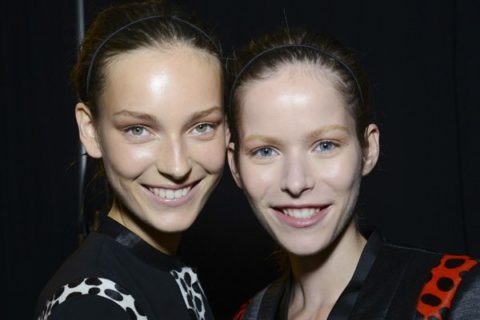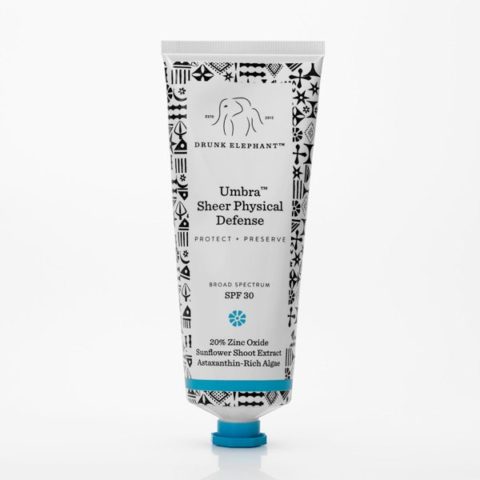Are you layering skincare products in the wrong order? We break down the best way to apply


Have you ever heard the saying, “Prevention is better than a cure?” Well your complexion craves a great deal of that. In order to keep that glow, banish acne and start minimizing any signs of aging, you need to form a healthy barrier of products to expedite the recovery process. Just as your office requires a team of dedicated staff with specialized roles, so does your skincare regime. Whether you can commit to a pared-down 4-step skincare routine, or you’re curious about testing out a Korean 10-step process, the products involved will contribute to a healthy cell turnover rate and a restored pH balance. One thing that remains the same is the importance of properly layering skincare products.
You might think that sequencing your products is a no-brainer, but there are often missteps along the way. From he said/she said, to mother knows best and beauty’s top trends, our over-saturated notion of a healthy complexion has become overwhelming. So to ensure that your products are penetrating, that you’re building up a moisture barrier, and beating time at it’s own game, we’re getting to the bottom of your single-file line skincare regime.
We chatted with Victoria Radford, Founder of RADFORD, Partner in Manhattan Dermatology & Cosmetic Surgery, Dr. Dendy E. Engelman and Dr. Dennis Gross MD, Founder of Dennis Gross Dermatology for their skincare secrets, and we’re about to bestow a bundle of beauty benefits onto you. A healthy skincare routine consists of several specific steps, with little-to-no wait time in between, despite what you might have heard. Taking a “coffee break” in between products is not working any miracles, and as Dr. Engelman pointed out, “Most of the current formulations[…]are made for layering, so you don’t have to wait for long between steps. After your serum has been absorbed into the skin, it is okay to apply the next step.” Of course, there is one exception to that rule as Radford pointed out—“If you are treating a blemish or highly acne-prone skin, you can should a product with an active ingredient such as salicylic acid and let it set on the skin a minute or two before you put on your cream.” As you can see, “Skincare routines will vary depending on each individual’s needs, but there is a right order for your basics,” noted Dr. Gross. Radford added that, “Skin regimens are as unique as each individual, which is why it is so important to seek personalized skincare advice.”
“One of the keys to maximizing the benefits of any product in your daily skincare regimen is to apply products with a thinner consistency before the thicker. Products with heavy consistencies can block lighter-weight ones from penetrating the skin and doing their job,” suggested Dr. Gross. Furthermore, “A good rule of thumb to follow when applying skincare products is to always save sunscreen for last. Following this line of thinking, after cleansing the skin, serums go before oils, which go before lotions, which go before creams. As far as amounts to use, the size of a pearl is good for serums and creams. Divide that into 5 drops in order to cover the whole face (one drop for the forehead, one for each cheek, one for the nose and one for the chin). If you take too much out of the dispenser, add that to your neck, chest and hands,” said Dr. Engelman.
“All products are designed to work under normal physiological conditions such as normal room temperature and non-sweating circumstances,” said Dr. Gross. But if you’re still concerned about which products will stand up to your skin, Radford pointed out that, “All skin types can feel different depending on the day, you should be targeting the skin condition rather than skin type.” And combined with regular dermatological treatments that work overtime on your skin, you will be well on your way to healthy and radiant complexion. Dr. Engelman noted treatments such as, “Lasers and light devices such as intense pulsed light (IPL) are a great way to fight and/or treat hyper-pigmentation and to help combat aging. If you are up for a splurge, the Oxylight facial provides the widest range of options – offering LED, oxygen infusion, diamond microdermabrasion, galvanic current, ultrasonic energy, and anti-oxidant infusion.” Where Dr. Gross suggested his “Alpha Beta Professional Peel that helps to firm the skin, increase cell turnover to reduce the appearance of fine lines and wrinkles while giving the skin an immediate glow.” And for a holistic approach Radford suggested “The Rezenerate Wand, which is a handheld tool with an array of pyramid-like nano-structures to engage the body’s natural restorative properties stimulating cell repair and regeneration.”
For a straightforward approach to skincare, you should take comfort in the idea that there are non-negotiables despite the ever-changing trends. According to Dr. Engelman, those with normal (combination) skin should stick to a 6-step process. Those with an oilier complexion can skip the facial oil and work in an oil-free moisturizer. For those with dry skin, keep the rest of the routine consistent with that of a normal skincare regimen and apply moisturizer and oil as much and as often as needed.
Step 1: Exfoliator
If you can recall all of the makeup you apply to your skin on a daily basis, then you should quiver at the thought of not all of that washing off at the end of the night. So in order to get the most out of your skincare routine and the products you’ve invested in, you need to prep and prime your skin for maximum benefits. Meaning, blast the skin’s surface with an exfoliator to help rid it of the dirt and debris that’s hiding about. Once you’ve brushed up, you can move onto cleansing and clearing because your complexion is all ready to soak up the second step’s beauty benefits.
Try: Saje Wellness Skin So Clean Mildly Exfoliating Cleanser ($25, saje.ca)
Step 2: Cleanser
A gentle cleanse in the morning, and a more thorough cleanse in the evening is key to keeping your pores clear. And while cleansing your face might seem simple enough, there is actually a method behind it. While hot water helps to loosen dirt, it has a harsh and drying effect on your skin. It’s always best to use lukewarm water when working with your cleanser, and spend some quality time with that lather.
It definitely seems like a no brainer, but working into those fine lines and crevices will ensure you’re not allowing a build up of debris to interfere with your complexion. If you have trouble spots such as your t-zone, spend a few more seconds in that area, and wash thoroughly. Don’t forget that a build up of your soap and the ingredients in your facial cleanser can also cause an unsightly breakout.
Try: Peter Thomas Roth Cucumber De-Tox Foaming Cleanser ($40, sephora.com)
Step 3: Serum
These small but mighty skin savers are vital in the upkeep of your skincare regimen. They are incredibly potent and power-packed with antioxidants, vitamins and ingredients that help fight aging and environmental damage at the source. While some might suggest that you should add a topical antioxidant such as Vitamin C after this step, Dr. Engelman noted that, “Many serums contain vitamin C, so that may be a duplicative step.” Help cut down your time, and invest in multitasking ingredients that help restore your skin.
Try: Perricone MD Vitamin C Ester Serum ($98, sephora.com)
Step 4: Oil
Whether you’re on board with the oil craze or not, you should know that it is a wondrous step for many skin types. “Coconut oil is great because it can be used for all skin types and has high levels of Lauric acid which has antibacterial, anti-fungal and antimicrobial properties, making this all-in-one product suitable for even the most blemish-prone skin,” noted Victoria Radford. So if you’re not ready to splurge on a high-priced facial oil, you already may have a quick fix lying around your kitchen. Another favourite: pure Argan oil.
Try: Josie Maran 100 percent Pure Argan Oil Light ($60, sephora.com)
Step 5: Moisturizer
A routine moisturizer is key to any healthy skincare routine, most simply because it helps lock in your previous skincare steps. You should keep the climate in mind when working a moisturizer into your routine. For those colder months, a thicker consistency will help hydrate and heal against the drying elements. For a sunnier season, a thinner moisturizer or a gel formula will feel more lightweight on your skin. Any way you slice it, this step is crucial for your complexion.
Try: Clinique Dramatically Different Moisturizing Lotion+ ($32, sephora.com)
Step 6: SPF
Even in the dead of winter, your skin is exposed to harmful rays that can create damaging effects to your complexion. From tackling everything from premature aging to sun spots, this step is not messing around. Even if you have makeup products with added sunscreen, they’re still not doing enough. You need a dedicated sunscreen product to have lasting and worthwhile effects to your skincare routine.
Dr. Engelman noted that, “As far as the final step with sunscreen, be generous with the amount you use. Often, the amount tested during the studies to determine SPF is 6-12 times the normal amount that people actually apply with daily use. So, try to increase this amount in order to ensure proper protection—especially on sunny days or when you know you will have an increased amount of sun exposure.”
Try: Drunk Elephant Umbra Sheer Physical Defense SPF 30 ($48, sephora.com)










